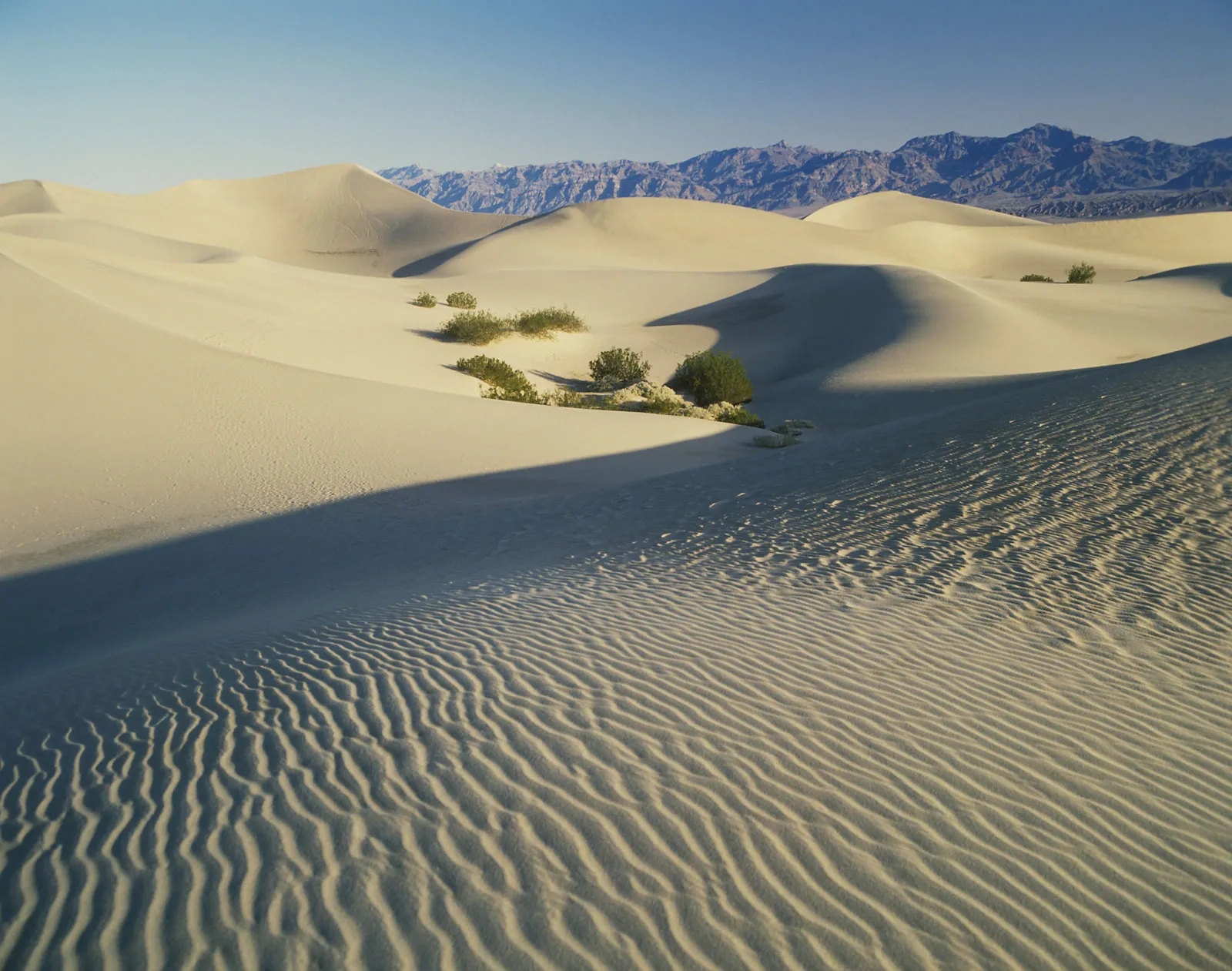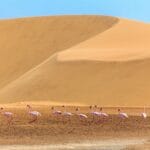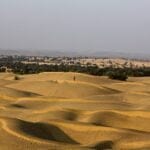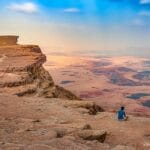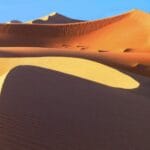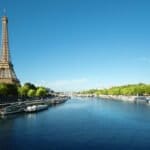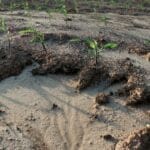Get ready for a thrilling adventure into the heart of America’s biggest and most intriguing desert, the Great Basin. Imagine a land where vast, empty landscapes take your breath away. Picture towering mountains guarding shimmering white salt flats like giant sentinels. Dive into the unique world of plants and animals that have made this tough place their home. And follow the stories of the Native Americans and pioneers who left their mark on this captivating wilderness. It’s a journey that will make you gasp, wonder, and fall in love with one of Earth’s most incredible natural treasures.
Biggest Desert in the United States
When we think of deserts, images of scorching sand dunes and endless stretches of nothingness often come to mind. But deserts are so much more than that! They’re brimming with unique life and surprising beauty. And did you know that the United States is home to quite a few of these fascinating landscapes?
You might be surprised to learn that the biggest desert in the U.S. isn’t the famous Mojave Desert, but its less well-known neighbor, the Great Basin Desert. This massive desert stretches its arms across a whopping 200,000 square miles! To put that into perspective, that’s larger than the entire state of California!
The Great Basin Desert sprawls across a significant chunk of the American West, encompassing parts of Nevada, Utah, California, and even reaching into Idaho. Unlike some deserts, it’s not just a sea of sand. The Great Basin is a mosaic of different landscapes, shaped by powerful geological forces over millions of years. You’ll find towering mountain ranges, vast salt flats that seem to stretch forever, and valleys dotted with hardy shrubs and wildflowers.
Key Points:
- Largest Desert in the U.S.: The Great Basin Desert, covering 200,000 square miles.
- Location: Spans Nevada, Utah, California, and Idaho in the American West.
- Diverse Landscape: Includes mountains, salt flats, and valleys with hardy vegetation.
Now, you might be thinking, “A desert that big must be a desolate wasteland, right?” Well, not quite! While it’s true that the Great Basin is incredibly dry and can experience extreme temperatures, it’s far from lifeless. This desert is a testament to the power of adaptation, home to a remarkable array of plants and animals that have figured out how to thrive in this challenging environment.
Imagine this: after a rare desert rain, the landscape bursts into color! Vivid wildflowers paint the desert floor, while resilient creatures like desert tortoises, kangaroo rats, and even mountain lions emerge to take advantage of the precious moisture.
- Not a Desolate Wasteland: Supports a remarkable array of adapted plants and animals, including desert tortoises, kangaroo rats, and mountain lions.
- Springtime Transformation: Rare desert rains transform the landscape with wildflowers and increased wildlife activity.
The Great Basin Desert isn’t just a natural wonder; it also holds a rich human history. For centuries, Native American tribes have called this desert home, developing a deep understanding of its rhythms and resources. Their knowledge and traditions continue to play a vital role in protecting this unique ecosystem.
- Human History: Home to Native American tribes for centuries, who have a deep understanding of its resources.
Today, the Great Basin Desert offers endless opportunities for adventure and exploration. Hikers and nature enthusiasts can lose themselves in its vast wilderness, marvel at its otherworldly geological formations, and witness the tenacity of life in this extreme environment. It’s a place that challenges our perceptions of what a desert can be, reminding us that even the most seemingly barren landscapes hold hidden wonders waiting to be discovered.
- Adventure and Exploration: Offers opportunities for hiking, exploring geological formations, and observing extreme environment adaptations.
- Challenges Perceptions: Reminds us that even barren landscapes can hold hidden wonders and demonstrate the power of life’s resilience.
What is the United States’ Largest Desert?
You might be picturing towering sand dunes and a scorching sun, but the largest desert in the United States isn’t exactly what you see in the movies. It’s called the Great Basin Desert, and it’s a different beast altogether! This massive expanse sprawls across a whopping 190,000 square miles, covering big chunks of Nevada, Utah, California, and even reaching into Idaho. To put that into perspective, imagine an area bigger than California itself!
However, if we’re talking about the biggest desert in all of North America, the Great Basin gets dethroned by the Chihuahuan Desert. This behemoth clocks in at 200,000 square miles, making it the reigning champ.
But here’s the real kicker: the Great Basin Desert isn’t a sweltering inferno year-round. Unlike the more stereotypical hot deserts like the Mojave or Sonoran, it experiences a more dramatic range of temperatures. Think scorching summers that can bake the ground, followed by winters that bring bone-chilling cold and even snow! This unique characteristic earns it the title of a “cold desert,” setting it apart from its hotter counterparts.
Think of it this way:
| Feature | Great Basin Desert | Other Major US Deserts |
|---|---|---|
| Size | Largest in the US | Smaller |
| Temperature | Hot summers, cold winters | Hot year-round |
| Type | Cold desert | Hot deserts |
So, while the Great Basin Desert might not be a sun-drenched sea of sand like you often see in pictures, its sheer size and unpredictable climate make it a truly remarkable and, dare I say, cool, natural wonder!
What are the 4 deserts in the US?
Now that we’ve talked about deserts in general, let’s dive into the magnificent four that call the US home. Each of these deserts has its personality, shaped by things like temperature, rainfall, and the plants and animals that call it home.
- The Great Basin Desert: This giant stretches across a whopping 190,000 square miles, taking up large chunks of Nevada, Utah, Idaho, and Oregon. It’s what’s known as a “cold desert,” which might sound strange, but it just means it gets pretty chilly there, especially compared to our next contestant. You’ll find vast, shimmering salt flats and rugged mountain ranges that take your breath away.
- The Mojave Desert: Don’t let its size fool you; this 48,000 square-mile pocket of southeastern California and southern Nevada packs a punch when it comes to dryness and extreme temperatures. This is where you’ll find those iconic Joshua trees, standing tall against the backdrop of sparse vegetation.
- The Chihuahuan Desert: This sprawling desert covers over 140,000 square miles, crossing borders from the southwestern US into northern Mexico. It’s a bit of an overachiever, boasting a diverse ecosystem that includes everything from grasslands to shrublands to mountains.
- The Sonoran Desert: Another desert that likes to straddle the US-Mexico border, the Sonoran covers about 100,000 square miles of southwestern US and northwestern Mexico. It is famous for its unique plant life, like majestic saguaro cacti reaching for the sky and Palo Verde trees adding a splash of green to the landscape.
It’s worth noting that classifying deserts can be tricky, and scientists sometimes disagree on the exact boundaries or even the number of deserts in a region. Some research suggests additional, smaller desert areas might exist within or around these major ones. So, while we often talk about four major US deserts, the reality is a bit more nuanced and constantly evolving with new discoveries!
Is Alaska the biggest desert?
We were just talking about the Great Basin Desert, which is HUGE! It’s the biggest desert you can find completely within the United States. But if we’re talking about the heavyweight champion of North American deserts, the Chihuahuan Desert takes the crown. It sprawls across a massive 200,000 square miles, making the Great Basin look like a practice arena.
Now, about Alaska… it’s a whole different ball game up there. You see, Alaska has what’s called the Arctic Polar Desert. It’s a bit of a mind-bender because, when we think “desert,” we usually picture scorching sand and cacti. But the Arctic Polar Desert is freezing cold! It’s defined as a desert because it’s super dry – it gets very little rain or snow. So, while Alaska has a desert, it’s definitely not your typical sun-baked one, and it’s not the biggest in the US, either.
Just to be super clear, Alaska doesn’t have the biggest desert in the US. That award goes to the Great Basin Desert. And if we’re talking North America, the Chihuahuan Desert is the undisputed champion. Each of these deserts has its own vibe, shaped by the weather, the land, and all the incredible plants and animals that survive and thrive there.
But wait, there’s more! Did you know that the Sonoran Desert, famous for its iconic saguaro cacti, is actually the biggest hot desert in North America? It covers a respectable 120,000 square miles across the southwestern US and Mexico.
So, we’ve got the Great Basin, the Chihuahuan, and the Sonoran – each one a fascinating example of how diverse and awe-inspiring deserts can be. It just goes to show that the world of deserts is full of surprises!
Key Takeaways:
- The Great Basin Desert is the largest desert found entirely within the US, covering roughly 190,000 square miles.
- The Chihuahuan Desert, sprawling across 200,000 square miles, is the largest desert in all of North America.
- Alaska’s Arctic Polar Desert is unique because of its frigid temperatures and polar environment, which makes it different from the typical image of a hot, sandy desert.
- The Sonoran Desert is the largest hot desert in North America, covering 120,000 square miles across parts of the southwestern US and Mexico.
Is Arizona a Desert?
Okay, so we’ve talked about the Great Basin Desert, this massive, kind of mysterious land in the Western US. Now, let’s talk about Arizona. It’s known for being hot, dry, and, well, pretty much what you picture when you think “desert,” right? And you wouldn’t be wrong!
Arizona is actually home to two major deserts! The Sonoran Desert, probably the one you picture with the giant saguaro cacti and those amazing desert wildflowers, takes up a good chunk of Southern Arizona. Then you’ve got the Chihuahuan Desert, hanging out in the southeastern corner of the state, coming over from New Mexico and Texas.
So yeah, Arizona is definitely a desert state! But here’s the thing – not all of Arizona is a desert. There are actually several different ecosystems within the state, from mountains to forests. It’s kind of what makes Arizona so unique! You can be hiking through a pine forest in the morning and find yourself surrounded by cacti in the afternoon.
It’s important to remember that nature is complex, and these labels we put on things, like “desert,” are just our way of trying to understand it all.
Thinking about the future:
Scientists are always learning new things about deserts and how climate change might affect them. Studying these changes helps us understand what plants and animals in the desert might face in the future.
Which is bigger USA or Sahara desert?
So, we’re talking about two massive places here, and you might be surprised to learn they’re actually pretty close in size! The Sahara Desert is huge, sprawling across a whopping 3.5 million square miles. Now, picture the lower 48 states of the U.S. (that’s everything except Alaska and Hawaii) – that’s roughly the size we’re talking about when we talk about the Sahara.
Now, the contiguous United States clocks in at about 3.8 million square miles. That means it edges out the Sahara Desert by a hair, size-wise. It’s not a huge difference, but it’s enough to make the U.S. slightly bigger.
Here’s another interesting tidbit: when we talk about deserts, we often think of scorching sand dunes, like those found in the Sahara. But did you know there are also cold deserts? Antarctica and the Arctic, for instance, are technically considered deserts too! And guess what? They’re both way larger than both the Sahara and the United States combined! Who knew deserts could be so diverse?
Is Texas a Big Desert?
So we’ve been talking about the landscapes of Texas, and you might be wondering, is this place one giant sandbox? Well, it’s a bit more complicated than a simple yes or no. You see, Texas has a whole lot of land, and a good chunk of it, about 23% to be exact, is what experts would call “desert.” That might sound like a lot, and it kind of is, enough to put Texas in sixth place among US states with the most desert land.
But here’s the catch: officially speaking, less than 10% of Texas actually gets the “desert” label on maps and such. It’s like some parts of Texas are walking the desert walk but haven’t quite earned the official title yet.
Now, let’s talk about the big kahuna of North American deserts – the Chihuahuan Desert. This massive expanse of arid land stretches across parts of Texas, New Mexico, Arizona, and even dips its toes into Mexico. And guess what? It’s even bigger than the deserts you’d find in California! But within Texas itself, the only officially recognized desert zone is the Trans-Pecos region.
Think of it this way: Texas has a taste of the desert, a significant taste at that, but it’s not all sand dunes and cacti. There’s a whole lot more to the Texan landscape than meets the eye.
Is Alaska Technically a Desert?
So, we’ve talked about how Alaska doesn’t quite fit the traditional image of a scorching desert. But what about its dry, northern reaches? Could those areas be considered deserts? Well, it’s tricky.
You see, parts of Alaska fall within what’s known as the Arctic Polar Desert. This region certainly looks the part, with vast stretches receiving very little precipitation. However, when we look at the bigger picture, things get a bit murky.
Traditional desert classifications often rely on factors like size and total rainfall. While the Arctic Polar Desert shares some similarities with its hotter counterparts – that dryness being a big one – it doesn’t quite reach the same scale in terms of area or precipitation levels.
It’s also important to remember that the Arctic Polar Desert is a completely different beast when it comes to its environment. We’re talking bone-chilling temperatures and a unique ecosystem that thrives in the extreme cold. This landscape, dominated by permafrost and hardy, low-lying vegetation, is a far cry from the sun-baked dunes we often picture when we think “desert.”
Here’s the bottom line: While the Arctic Polar Desert in Alaska shares some desert-like features, especially that parched landscape, it’s not quite so simple to slap a “desert” label on it. Its smaller size, frigid temperatures, and unique ecological makeup set it apart from how we typically define deserts.
Think of it this way: It’s like comparing apples and, well, really, really cold apples. They might share some similarities, but they’re ultimately quite different.
Research into these unique environments is ongoing, and scientists are constantly learning more about how climate change might be impacting these delicate ecosystems. So, while we might not have all the answers yet, one thing is clear: Alaska’s Arctic regions remind us that nature is full of surprises, and sometimes, things aren’t always as black and white as they seem.
What is the 1 largest desert in the world?
Okay, so we’ve already talked about some pretty impressive deserts, but hold on to your hats because we’re about to explore the kingpin of them all!
You might be surprised to learn that the biggest desert on Earth isn’t the Sahara, even though it feels like it could swallow a continent whole! It’s actually way down south, covering a mind-blowing chunk of Antarctica. We’re talking a whopping 5.5 million square miles! To put that in perspective, the entire United States could fit in there more than once with room to spare.
Now, I know what you’re thinking: “Antarctica? But isn’t that all ice and snow?” And you’d be right, it is. But that’s the thing about deserts – they aren’t always scorching hot sand dunes like you see in the movies. They’re defined by how dry they are, meaning how little rain or snow they get. And Antarctica? Well, it barely gets any precipitation at all, making it the ultimate, albeit unexpected, desert champion.
Think about it: vast, white landscapes stretching as far as the eye can see, whipped by icy winds and plunged in perpetual freezing temperatures. It’s a harsh and unforgiving environment, even more extreme than your typical sandy desert. In fact, it’s so dry and cold that very few plants and animals can survive there.
Research suggests that understanding this massive ice desert is crucial. Why? Because what happens in Antarctica affects the entire planet’s climate. The ice sheet helps regulate global temperatures, and any significant changes there could have a ripple effect worldwide.
So, while it might not be the first image that pops into your head when you think of a desert, Antarctica definitely steals the show when it comes to sheer size and its impact on our world. It’s a true testament to the incredible – and sometimes surprising – diversity of our planet!
If you are curious and want to know more about the vast and desolate lands of Asia, you can find information on the largest desert in Asia. When the discussion is about the parched African lands, you can find an interesting page on the largest desert in Africa. However, if you are interested in the barren stretches of the entire globe, you can check out the largest desert in world.
Is Death Valley a Desert?
You bet it is! Death Valley isn’t just any desert; it practically screams “desert” with its record-breaking heat. We’re talking temperatures so high they could bake cookies on your car’s dashboard! But scorching temperatures are just one piece of the puzzle when we talk about deserts.
The real clincher? The lack of rain. Deserts are notoriously stingy when it comes to rainfall, and Death Valley fits the bill perfectly. It’s one of the driest places in North America, making it a true champion of aridity.
Now, you might be thinking, “Hey, doesn’t a desert need sand dunes to qualify?” While it’s true that many folks picture rolling sand dunes when they think of a desert, those aren’t actually a requirement.
Death Valley likes to do things a bit differently. Instead of endless dunes, it boasts a kaleidoscope of otherworldly landscapes. Towering mountains pierce the sky, their slopes painted in hues of red, orange, and purple. Vast, flat salt pans stretch out like giant, cracked mirrors, remnants of ancient lakes long gone dry. And then there are the canyons, carved over eons by wind and water, their walls whispering tales of time and erosion.
So, even though you won’t find many sandcastles being built in Death Valley, it checks all the boxes (and then some) when it comes to being a desert. It’s a place of extremes, a land of stark beauty, and a testament to the power of nature to create something truly awe-inspiring.
Is California a big desert?
Okay, so we’ve talked about the different deserts in California, but does that actually mean the whole state is just one giant sandbox? Not quite! While California is known for its sunny weather and beaches, it’s actually incredibly diverse. Think towering mountains, lush forests, and yes, even those beautiful, stark deserts.
Think of it this way: California has a lot of different “personalities,” and its deserts are just one of them. It’s kind of like having a friend who’s super into sports – they might spend a lot of time on the field, but that doesn’t mean they’re always playing sports.
Even though California has those three big deserts – the Colorado Desert, the Mojave Desert, and part of the Great Basin Desert – they don’t take up the entire state. In fact, a lot of California is actually covered in forests and mountains! And let’s not forget the coast – California’s beaches are world-famous.
But here’s the thing: even though the deserts aren’t the only part of California, they’re still a really important part. They’re home to some of the most unique plants and animals in the world, and they have a beauty that’s totally different from anything else you’ll see. Plus, they offer a ton of opportunities for adventure, from hiking and camping to off-roading and exploring ghost towns.
So, is California a big desert? Well, it’s complicated! It’s more accurate to say that California has deserts, and they’re a pretty amazing part of what makes the state so special.
- Unlock Water’s Symbolism: A Cross-Cultural Exploration - April 20, 2025
- Identify Black and White Snakes: Venomous or Harmless? - April 20, 2025
- Unlocking Potential: Origins High School’s NYC Story - April 20, 2025
